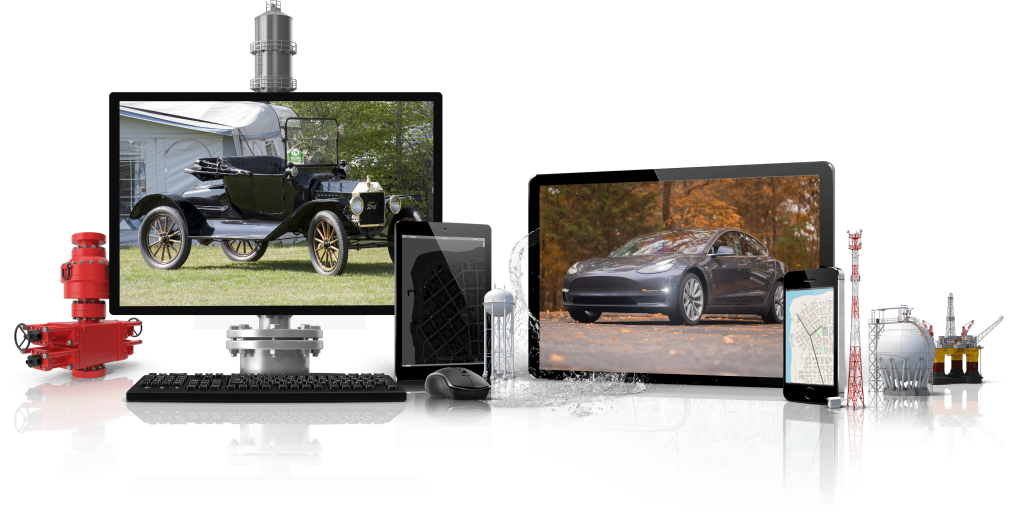As industrial automation evolves, how do we keep speaking the same language? It helps to evaluate automation by functions, not components. Think about how industrial automation technologies like SCADA can accelerate application capabilities.
Learning Objectives
- Operational functionality means more than automation components.
- Using non-critical data in critical systems can lead to undesirable results.
- SCADA comparisons should go beyond checkmarks to examine how SCADA is what SCADA does.

Is the Industrial Internet of Things (IIoT) replacing supervisory control and data acquisition (SCADA)? That is a common message these days but is it real or part of an agenda?
SCADA systems connect sensors, equipment, and other data sources to a server(s) that makes it available to consumers.
The IIoT connects sensors, equipment, and other data sources to a data broker (that sits on a server) and makes it available to consumers.
While the acronyms IIoT and SCADA differ, their functions are the same, to collect data and make it useful to those who need it. IIoT and SCADA systems have many differences and much in common.
IoT (and later IIoT) was spawned from SCADA applications that used the internet for connecting systems. In fact, IoT and IIoT used communications that transcended the Internet using virtual private networks (VPNs) in the late 1990s and early 2000s. Additionally, SCADA and IIoT often use the same types of infrastructure.
The idea that a new “good” thing is replacing an old “bad” one makes for good marketing, but on closer inspection, one is simply adding to the other to achieve the same goal. IIoT can be an easier way to bring remote data into a SCADA system, while advances in SCADA can add functionality and ease of integration to the IIoT.
Operational functionality means more than automation components
If Henry Ford were to see a Tesla Model 3 drive past him, he would be amazed at how far cars have evolved since they first started rolling off his assembly lines in 1913. However, he still would recognize it as a car, even though every component is radically different. How? He would know it by its function. Whether it’s a Model-T or a Model 3, a car is something people climb into and go places.
In the automation industry, innovation is seen as a wave that brings in the new and washes away the old rather than the latest iteration of age-old concepts. New terms and acronyms seem intent on trying to ensure that last-year’s cutting-edge technology will be obsolete next year.
A brief history of automation
“Sneaker net” was the original industrial network. The first automation systems were essentially people whose job it was to walk around looking at how everything was going and react accordingly. They might have been confined to one factory, or they may have traveled for miles between various remote sites. A clipboard recorded the process history. The program logic existed in people’s heads. If Gauge 1 is higher than 55 feet, then turn off Valve 3. When bad weather caused a skipped day, that day’s datapoint was estimated. If there was an overflow while people were gone, they grabbed a mop upon return.
With the introduction of computer technology manual controls quickly advanced into these familiar concepts.
- Distributed control systems (DCS)
- Programmable logic controllers (PLC)
- Remote telemetry units (RTU)
- Human machine interface (HMI)
- Supervisory control and data acquisition (SCADA)
- Industrial Internet of Things (IIoT).
Data acquisition and decision-making tools used downstream also continue to evolve.
Who do I trust for automation intelligence?
How often have you read a review of something you’d like to purchase that said, “It’s the best thing ever… changed my life…” and in the next review saw a negative opinion saying, “Can I give negative stars?”
Wading through the mire of differing opinions on choosing control system software also can be challenging. A rule of thumb to help sense a biased opinion is around the use of generalities. Though commonalities do exist across platforms, a frequent distraction technique is to say things like, “SCADA generally doesn’t provide redundancy, but DCS does!”
Is that grand statement true? The answer is no. Some SCADA systems provide an almost infinite amount of redundancy to equal or exceed DCS systems. Do people always implement redundancy for either system? Again, the answer is no.
Attention-grabbing statements may throw off someone who could benefit greatly from a SCADA system.
Start by asking difficult questions.
To connect or not to connect automation infrastructure
Connecting everything to everything and everyone has been a strategy in recent years, until someone gains control of something that they shouldn’t have access to. It stands to reason that critical infrastructure should remain protected from attacks and hacks. Air-gapping a system is frequently mentioned as a way to do this.
“Don’t connect systems to the internet.”
“Don’t allow remote access.”
These statements have valid points, but miss important realities. For example, how are servers synchronized? The server time needs to synchronize with some time source somewhere. Unless you own an atomic clock, servers are still connected to the internet receiving time-synchronization data that is passed to other servers on your air-gapped system. What would happen if this were completely out of sync? If a local system were unavailable (storm event, pandemic, hardware failure), how could you access the process, safely and securely?
Using non-critical data in critical automated systems
Sometimes non-critical data gets blended with critical systems in subtle ways. In early 2020, an artist towed a little red wagon containing 99 cell phones around a major city. What happened? It caused a huge traffic jam, as the streets being walked with the wagon emptied of vehicles. Mapping software re-routed cars, trucks, buses, including emergency vehicles away from what it considered to be a major traffic jam in the city center.
Non-critical background data being transmitted by cell phones were interpreted by the software as slow-moving traffic. Critical services like fire, ambulance, and police relied on the resulting information.
All systems need to examine data validation. It matters. Always ask how the source data is being validated. Does the protocol being used carry messages without validating what is inside? Is it being segregated completely from data that could be hacked? How strong is the encryption (if any) being used?
SCADA checkmarks, comparisons
Comparisons often take the form of a table of checkmarks. List all features on a table and check off the ones that are the same. Unfortunately, it’s not that simple, at least not when it comes to detailed comparisons. Not all systems are created equal, making differentiation a challenge.
A mission-critical mindset from the companies being compared is a great start. A mission-critical approach focuses on maximizing uptime inherently in the software by providing multiple redundant mechanisms to ensure that a system doesn’t fail.
The license agreements we click “Agree” to can be very revealing. Read them. They can include statements like, “Not designed for use in critical or hazardous environments, where failure could lead to loss of life.” If an aircraft mentioned that it should not be used for transporting people, would you think twice about boarding it?
Check marks give a quick view of similarities and differences but are not very revealing. Scaling a solution from a small to large system, adding multiple levels of redundancy, ease of use, forward compatibility and quality of technical support do not always show up on a table.
Ask the questions and read the software license agreements.
SCADA is what SCADA does
To review how it all applies to selecting a SCADA system:
- Don’t get hung up on terms
- Stay focused on what you are trying to do
- Ask difficult questions.
SCADA continues to grow and integrate new features and technologies as they emerge. Just like in the car analogy, nearly everything can be changed without changing its core function. Even now as we begin to see cars flying overhead, we still call them flying cars. Why? It’s still a car.
Author Bio: Chris Little, media relations, VTScada by Trihedral, has been with Trihedral since 2007. In addition to serving VTScada customers in Quebec, he serves as Trihedral’s communications expert producing a variety of marketing resources including webinars, articles, press releases, and brochures. Little is also a co-host of the popular news channel, The Automation Village.
.
First published by Control Engineering Magazine: https://www.controleng.com/articles/scada-can-accelerate-automation-iiot-implementations/

